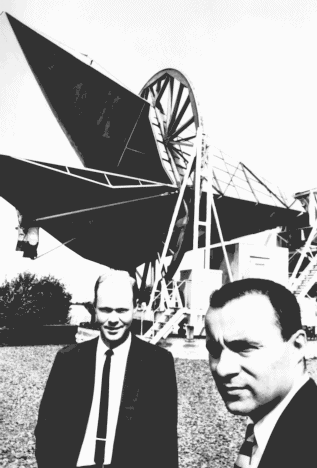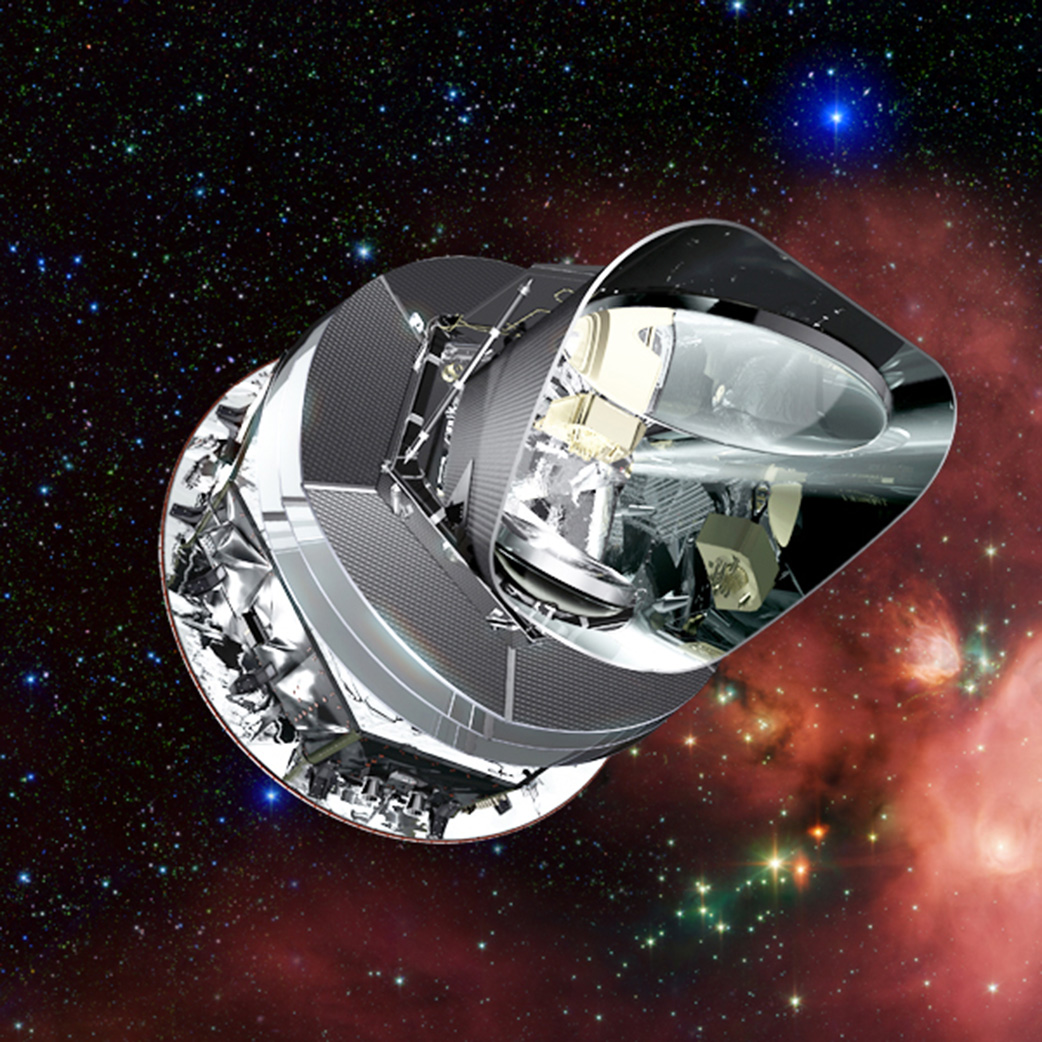
Beginning in 1948, the American cosmologist George Gamow and his coworkers, Ralph Alpher and Robert Herman, investigated the idea that the chemical elements might have been synthesized by thermonuclear reactions that took place in a primeval fireball. The high temperature associated with the early universe would give rise to a thermal radiation field, which has a unique distribution of intensity with wavelength (known as Planck's radiation law), that is a function only of the temperature. As the universe expanded, the temperature would have dropped, each photon being redshifted by the cosmological expansion to longer wavelength, as the American physicist Richard C. Tolman had already shown in 1934. By the present epoch the radiation temperature would have dropped to very low values, about 5 above absolute zero (0 K, or -273 C) according to the estimates of Alpher and Herman.
Interest in these calculations waned among most astronomers when it became apparent that the lion's share of the synthesis of elements heavier than helium must have occurred inside stars rather than in a hot big bang. In the early 1960s physicists at Princeton University, N.J., as well as in the Soviet Union, took up the problem again and began to build a microwave receiver that might detect, in the words of the Belgian cleric and cosmologist Georges Lematre, "the vanished brilliance of the origin of the worlds."

The actual discovery of the relict radiation from the primeval fireball, however, occurred by accident. In experiments conducted in connection with the first Telstar communication satellite, two scientists, Arno Penzias and Robert Wilson, of the Bell Telephone Laboratories, Holmdel, N.J., measured excess radio noise that seemed to come from the sky in a completely isotropic fashion. When they consulted Bernard Burke of the Massachusetts Institute of Technology, Boston, about the problem, Burke realized that Penzias and Wilson had most likely found the cosmic background radiation that Robert H. Dicke, P.J.E. Peebles, and their colleagues at Princeton were planning to search for. Put in touch with one another, the two groups published simultaneously in 1965 papers detailing the prediction and discovery of a universal thermal radiation field with a temperature of about 3 K.
Precise measurements made by the Cosmic Background Explorer (COBE) satellite launched in late 1989 determined the spectrum to be exactly characteristic of a blackbody at 2.735 K. The velocity of the satellite about the Earth, the Earth about the Sun, the Sun about the Galaxy, and the Galaxy through the universe actually makes the temperature seem slightly hotter (by about one part in 1,000) in the direction of motion rather than away from it. The magnitude of this effect--the so-called dipole anisotropy--allows astronomers to determine that the Local Group of galaxies is moving at a speed of about 600 km/sec in a direction that is 45 from the direction of the Virgo cluster of galaxies. Such motion is not measured relative to the galaxies themselves (the Virgo galaxies have an average velocity of recession of about 1,000 km/sec with respect to the Milky Way system) but relative to a local frame of reference in which the cosmic microwave background radiation would appear as a perfect Planck spectrum with a single radiation temperature.
The origin of the "peculiar velocity" of 600 km/sec for the Local Group presents an interesting problem. A component of this velocity may be induced by the gravitational attraction of the excess mass above the cosmological mean represented by the Virgo cluster; however, it is now believed that the Virgo component is relatively small, at best 200-300 km/sec. A more important contribution may come from the mass of a "Great Attractor" at a distance of 108 million light-years connected to the Local Supercluster, but this interpretation is somewhat controversial since much of the supposed grouping lies behind the obscuration of the plane of the Milky Way. In any case, the generation of the large peculiar velocity of the Local Group of galaxies probably requires invoking an augmentation in dark matter of the gravitational attraction of the observable galaxies by a factor of roughly 10.
The COBE satellite carried instrumentation aboard that allowed it to measure small fluctuations in intensity of the background radiation, not just in the sense of a forward-backward asymmetry but also on angular directions in the sky that correspond to distance scales on the order of 10^9 light-years across (still larger than the largest material structures seen in the universe, such as the enormous grouping of galaxies dubbed the "Great Wall"). The satellite transmitted an intensity pattern in angular projection at a wavelength of 0.57 centimetre after the subtraction of a uniform background at a temperature of 2.735 K. Bright regions at the upper right and dark regions at the lower left showed the dipole asymmetry. A bright strip across the middle represented excess thermal emission from the Milky Way. To obtain the fluctuations on smaller angular scales, it was necessary to subtract both the dipole and the galactic contributions. The latter requires a good model for the radio emission from the Galaxy at the relevant wavelengths, for which astronomers possess only incomplete knowledge. Fortunately, the corrections at high galactic latitudes are not very large, and an image was obtained showing the final product after the subtraction. Patches of light and dark represented temperature fluctuations that amount to about one part in 100,000--not much higher than the accuracy of the measurements. Nevertheless, the statistics of the distribution of angular fluctuations appeared different from random noise, and so the members of the COBE investigative team believe that they have found the first evidence for the departure from exact isotropy that theoretical cosmologists have long predicted must be there in order for galaxies and clusters of galaxies to condense from an otherwise structureless universe.
Apart from the small fluctuations discussed above (one part in 100,000), the observed cosmic microwave background radiation exhibits a high degree of isotropy, a zeroth order fact that presents both satisfaction and difficulty for a comprehensive theory. On the one hand, it provides a strong justification for the assumption of homogeneity and isotropy that is common to most cosmological models. On the other hand, such homogeneity and isotropy are difficult to explain because of the "light-horizon" problem. In the context of the cosmic microwave background, the problem can be expressed as follows. Consider the background radiation coming to an observer from any two opposite sides of the sky. Clearly, whatever are the ultimate sources (hot plasma) of this radiation, the photons, traveling at the speed of light since their emission by the plasma, have only had time to reach the Earth now. The matter on one side of the sky could not have had time to have "communicated" with the matter on the other side (they are beyond each other's light horizon), so how is it possible (with respect to an observer in the right rest frame) that they "know" to have the same temperature to a precision approaching one part in 100,000? What accounts for the high degree of angular isotropy of the cosmic microwave background? Or, for that matter, for the large-scale distribution of galaxies? As will be seen below in the section Cosmological models, a mechanism called "inflation" may offer an attractive way out of this dilemma.

A modern microwave telescope, the Planck mission.
Excerpt from the Encyclopedia Britannica without permission.